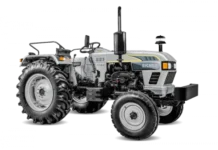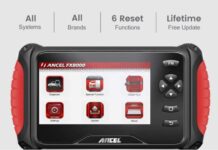Used vehicles offer significant financial savings for potential customers and a greater variety of options- not to mention the incredible thrill of discovering an outstanding bargain! However, purchasing used can also come with its share of uncertainties; therefore, this guide aims to cover some essential considerations when investing in used vehicles, ensuring your purchase will prove wise and worthy of satisfaction.
Exterior Inspection
Windows: Begin your examination of any used vehicles with the windows. Look for any cracks, chips, or scratches on the glass. These issues may seem minor, but they can lead to more significant problems over time if left unaddressed.
Paint: A car’s exterior paint is not only aesthetic but also protective. Check for any signs of rust, bubbling, or mismatched paint colors. These could indicate previous damage or poor repairs.
Tires: Tires are the only point of contact between the car and the road, making them crucial for safety. Inspect the tread depth, ensuring it is even across all tires. Uneven wear may suggest alignment issues. Additionally, check for any bulges or cuts in the tire sidewalls.
Seams of the Doors and Trunk: Pay attention to the seams where the doors and trunk meet the body of the car. Irregular gaps or misalignments may signify prior accidents or poor assembly.
Interior Examination
Seats: The condition of the seats can reveal a lot about the car’s overall maintenance. Look for excessive wear, tears, or stains. Unusual wear patterns might suggest that the odometer has been tampered with.
Air Conditioning (AC): A functional air conditioning system is crucial, especially in warmer climates. Turn on the AC and ensure that it blows cold air consistently. Unusual noises or foul smells may indicate issues with the system.
Check Engine Light: The presence of the check engine light can be a red flag. While it could be a minor issue, it’s essential to have a mechanic inspect the car to identify and address any potential problems.
Test Drive
Engine Performance: Start the car and listen for any unusual noises, such as knocking or rattling. Accelerate and decelerate smoothly, paying attention to the engine’s responsiveness. Any hesitations or stutters could be indicative of engine problems.
Transmission: Test the transmission by shifting through all gears. A smooth transition between gears is crucial for optimal performance. Any jerks or delays may indicate transmission issues.
Brakes: Evaluate the braking system by applying the brakes at different speeds. A consistent and responsive brake feel is essential for safety. If you notice any squeaks, grinding, or vibrations, the brake system may require attention.
Suspension: Drive over uneven surfaces to assess the suspension. Excessive bouncing or rattling may indicate worn-out shocks or struts. A well-maintained suspension system contributes to a smoother and safer ride, so it’s crucial you make sure any used vehicles pass this test.
Find The Right Used Vehicles For Your Needs
Buying used cars can be a rewarding experience when approached with diligence and care. By carefully inspecting its exterior and interior as well as conducting a test drive, and consulting an established mechanic when in doubt about any component, making informed decisions can save on future repair expenses. With these guidelines in mind, navigating the used car market and finding vehicles that suit both your budget and needs should become much simpler.
Read Also: The Forklift: No Warehouse Should Be Without One



































































